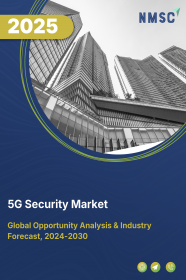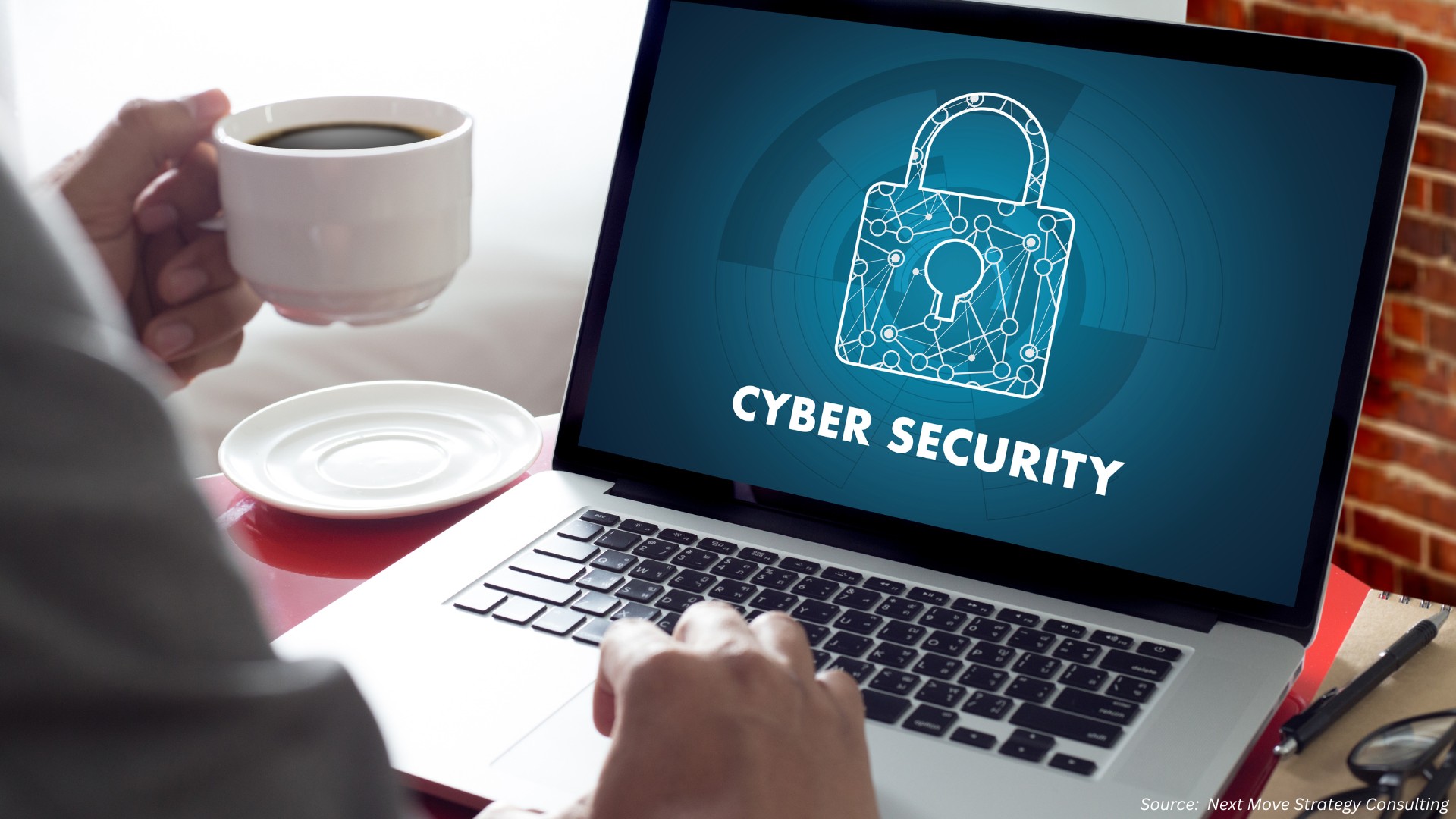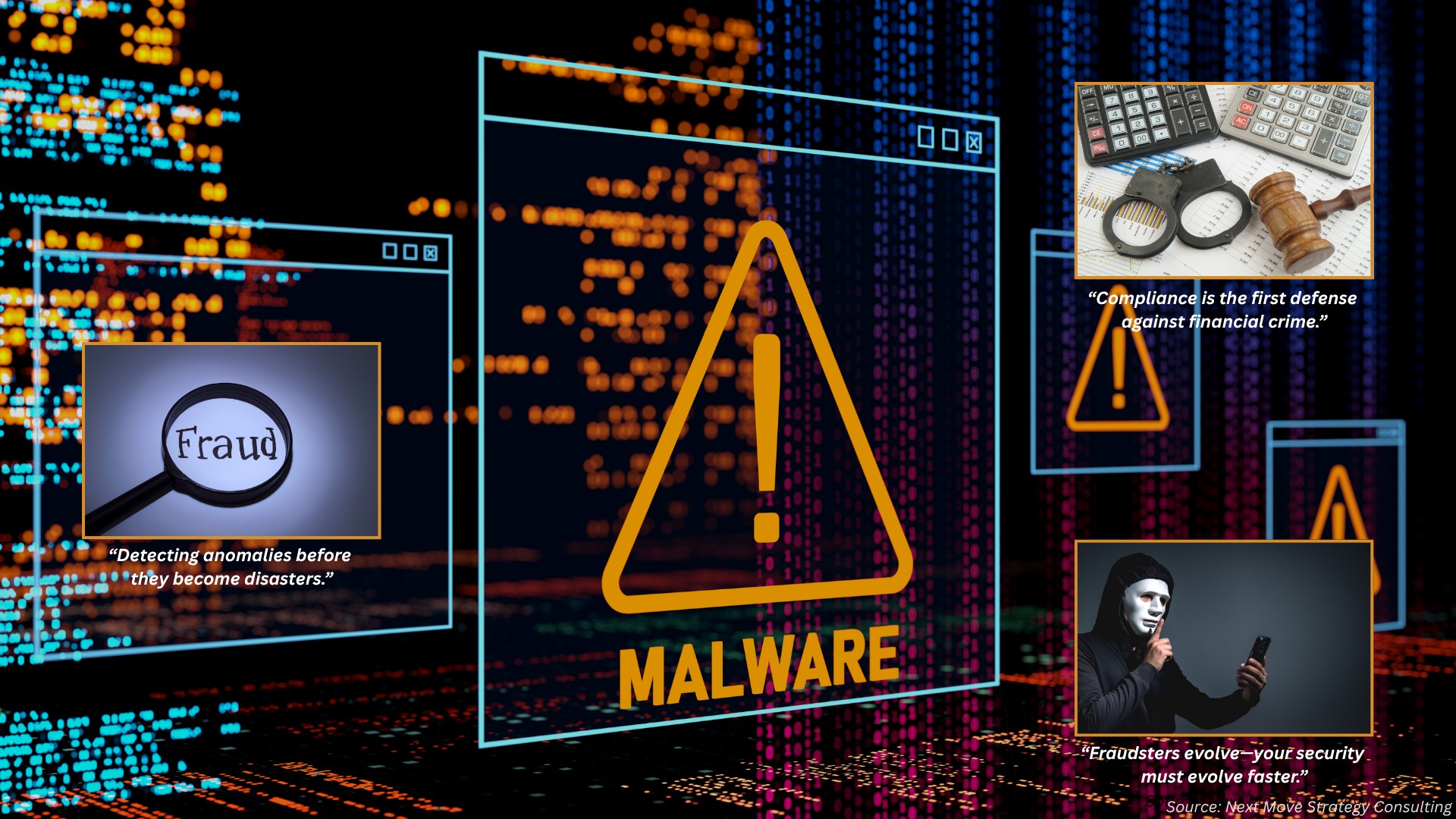
5G Security Market by Type (RAN Security and CORE Security), by Component (Solutions and Services), by Deployment Mode (On-Premises and Cloud), by Architecture (5G NR Non-standalone and 5G NR Standalone), by Organization Size (Large Enterprises and Small & Mid-size Enterprises), by Application (Virtual & Augmented Reality, Connected Automotive, Smart Manufacturing, Wireless eHealth, and Smart Cities) and Others- Global Opportunity Analysis and Industry Forecast 2023-2030
Market Definition
The 5G Security Market size was valued at USD 1.66 billion in 2022 and is predicted to reach USD 25.45 billion by 2030 with a CAGR of 40.7% from 2023-2030. 5G Security encompasses the comprehensive measures and protocols designed to safeguard the integrity, confidentiality, and availability of data and communications within fifth-generation (5G) wireless networks.
It addresses the challenges posed by the increased complexity of the 5G infrastructure, which integrates virtualization, edge computing, and massive Internet of Things (IoT) connectivity. This security framework relies on robust encryption, authentication mechanisms, and stringent access controls to fortify network elements and prevent unauthorized access or data breaches. Additionally, 5G Security leverages advanced technologies such as network slicing and artificial intelligence to proactively identify and mitigate potential threats, thereby ensuring a resilient and secure communication environment.
Market Dynamics and Trends
The demand for 5G technology is rapidly increasing across various industries including automobiles, healthcare, smartphones, and connected devices. This surge in demand is driven by the many advantages it offers, such as faster data transfer, reduced delays, and greater bandwidth capacity. As a result, there is a growing need for enhanced network security to ensure the protection and reliability of these expanding networks.
Moreover, factors such as lack of encryption in early 5G networks, vulnerability to denial of service (DoS) attacks and botnets is further fueling the growth of 5G security market. The absence of robust encryption mechanisms in the early stages of 5G network deployment stands out as a substantial concern. The vulnerability of 5G networks to denial of service (DoS) attacks presents a pressing need for heightened security. These attacks can disrupt the availability and functionality of essential services by overwhelming network resources, causing disruptions that can have far-reaching consequences across industries.
However, lack of standardization of 5G spectrum allocation and difference in 5G regulations by government agencies restraining the growth of 5G security market. On the contrary, growth of edge computing within 5G architecture that requires advance security solutions to safeguard data at the network's periphery is expected to create ample growth opportunities for the global market in the coming years.
Market Segmentations and Scope of the Study
The 5G security market report is segmented on the basis of type, component, deployment mode, architecture, organization size, application, industry vertical and geography. On the basis of type, the market is divided into RAN security and CORE security. On the basis of component, the market is classified into solutions and services.
Solution is further divided into next gen firewall, data loss prevention, antivirus/antimalware, disturbed denial of service protection, security gateway, sandboxing and other solutions. Service is further segmented into consulting, implementation and support & maintenance.
On the basis of deployment mode, the market is categorized into on-premises and cloud. On the basis of architecture, the market is divided into 5g NR non-standalone and 5g NR standalone. On the basis of organization size, the market is classified into large enterprises and small & mid-size enterprises.
On the basis of application, the market is divided into virtual & augmented reality, connected automotive, smart manufacturing, wireless ehealth and smart cities. On the basis of industry vertical, the market is categorized into manufacturing, healthcare, energy & utilities, retail, automotive & transportation, public safety, media & entertainment and others. Geographic breakdown and analysis of each of the aforesaid segments includes regions comprising of North America, Europe, Asia-Pacific, and RoW.
Geographical Analysis
North America holds the major share of power electronics market at present and is expected to continue its dominance during the forecast period. This is attributed to the factors such as growing integration of 5g technology in industrial automation, supply chain optimization, and floor communication in manufacturing processes across the region, which is driving the adaption of 5G security.
For instance, in February 2023, Schneider Electric, Capgemini, and Qualcomm have joined forces to expedite the advancement of 5G-driven industrial automation with the introduction of a 5G-enabled automated hoisting solution in the US. The primary objective of this collaboration is to harness the potential of 5G technology in elevating industrial automation procedures, amplifying efficiency, and unlocking novel possibilities across sectors such as manufacturing, energy, and transportation.
Moreover, presence of leading market players such as Palo Alto Networks, Cisco, A10 Networks, F5 Networks, and Juniper Networks further boost the market growth in the region. For instance, in February 2023, Cisco launched Meraki 5G Gateways with T-Mobile to deliver scalable business internet which is secured with leading network security and SD-Branch capabilities on the Cisco Meraki platform. T-Mobile Business customers will be able to take advantage of the cloud-native Cisco Meraki platform along with a range of advanced capabilities based on this platform.
On the other hand, Asia Pacific is expected to show a steady rise in the 5G security market due to rising government initiatives in the region that influence the adoption of 5G technology in multiple industries such as manufacturing, telecommunications, healthcare, finance, and transportation.
For instance, China rolled out a multi-pronged approach to ensure 5G network security with the cyber security Law and the Multi-Level Protection Scheme (MLPS 2.0). Moreover, China's Ministry of Industry and Information Technology (MIIT) introduced a security assessment framework for telecom equipment and services. In addition, The South Korean government established the 5G Security Act, which mandates telecom operators to conduct security assessments and adhere to specific security standards.
Competitive Landscape
The 5G security industry comprises of various market players such as Ericsson, Palo Alto Networks, Cisco, Allot, Huawei, A10 Networks, Nokia, F5 Networks, Juniper Networks and Spirent. These market players are adopting various joint venture strategies and launching various products to maintain their dominance in the global market.
For instance, In December 2021, Ericsson launched its Authentication Security Module solution for better user privacy based on a physical dedicated module for central management of authentication procedures in 5G Core networks. It is a module that helps communication service providers to store digital keys in a Hardware Security Module (HSM) with added layer of encryption and authentication.
Moreover, In April 2021, Palo Alto Networks collaborated with connectivity company DISH USA. This collaboration will help DISH to secure its 5G network by using container security, secure network slicing, real-time threat correlation and dynamic security enforcement. It will also use a cloud-native security offering, which includes Palo Alto Networks VM-series and CN-series next-generation firewalls as well as Prisma Cloud.
Key Benefits
-
The report provides quantitative analysis and estimations of the 5G security market from 2023 to 2030, which assists in identifying the prevailing market opportunities.
-
The study comprises a deep dive analysis of the 5G security market including the current and future trends to depict prevalent investment pockets in the market.
-
Information related to key drivers, restraints, and opportunities and their impact on the global market is provided in the report.
-
Competitive analysis of the players, along with their market share is provided in the report.
-
SWOT analysis and Porters Five Forces model is elaborated in the study.
-
Value chain analysis in the market study provides a clear picture of roles of stakeholders.
5G Security Market Key Segments
By Type
-
RAN Security
-
CORE Security
By Component
-
Solutions
-
Next Gen Firewall
-
Data loss Prevention
-
Antivirus/Antimalware
-
Disturbed Denial of Service Protection
-
Security Gateway
-
Sandboxing
-
Other Solutions
-
-
Services
-
Consulting
-
Implementation
-
Support & Maintenance
-
By Deployment Mode
-
On-Premises
-
Cloud
By Architecture
-
5G NR Non-standalone
-
5G NR Standalone
By Organization Size
-
Large Enterprises
-
Small & Mid-size Enterprises
By Application
-
Virtual & Augmented Reality
-
Connected Automotive
-
Smart Manufacturing
-
Wireless eHealth
-
Smart Cities
By Industry Vertical
-
Manufacturing
-
Healthcare
-
Energy & Utilities
-
Retail
-
Automotive & Transportation
-
Public Safety
-
Media & Entertainment
-
Others
By Region
-
North America
-
US
-
Canada
-
Mexico
-
-
Europe
-
UK
-
Germany
-
France
-
Italy
-
Spain
-
Denmark
-
Netherlands
-
Finland
-
Sweden
-
Norway
-
Russia
-
Rest of Europe
-
-
Asia-Pacific
-
China
-
Japan
-
India
-
South Korea
-
Australia
-
Indonesia
-
Singapore
-
Taiwan
-
Thailand
-
Rest of Asia-Pacific
-
-
RoW
-
Latin America
-
Middle East
-
Africa
-
Key Players
-
Ericsson
-
Palo Alto Networks
-
Cisco Systems, Inc.
-
Allot
-
Huawei Technologies Co., Ltd.
-
A10 Networks
-
Nokia Corporation
-
F5 Networks
-
Juniper Networks
-
Spirent Communications plc
Report Scope and Segmentation
|
Parameters |
Details |
|
Market Size in 2022 |
USD 1.66 Billion |
|
Revenue Forecast in 2030 |
USD 25.45 Billion |
|
Revenue Growth Rate |
CAGR of 40.7% from 2023 to 2030 |
|
Analysis Period |
2023–2030 |
|
Base Year Considered |
2022 |
|
Forecast Period |
2023–2030 |
|
Market Size Estimation |
Billion (USD) |
|
Growth Factors |
Increasing adoption of 5G in various industries including automobiles, healthcare, and consumer electronics fuels market growth. Vulnerability of 5G networks to DoS attacks is increasing the demand of 5G security solutions. |
|
Countries Covered |
28 |
|
Companies Profiled |
10 |
|
Market Share |
Available for 10 companies |
|
Customization Scope |
Free customization (equivalent up to 80 working hours of analysts) after purchase. Addition or alteration to country, regional, and segment scope. |
|
Pricing and Purchase Options |
Avail customized purchase options to meet your exact research needs. |




















 Speak to Our Analyst
Speak to Our Analyst

























